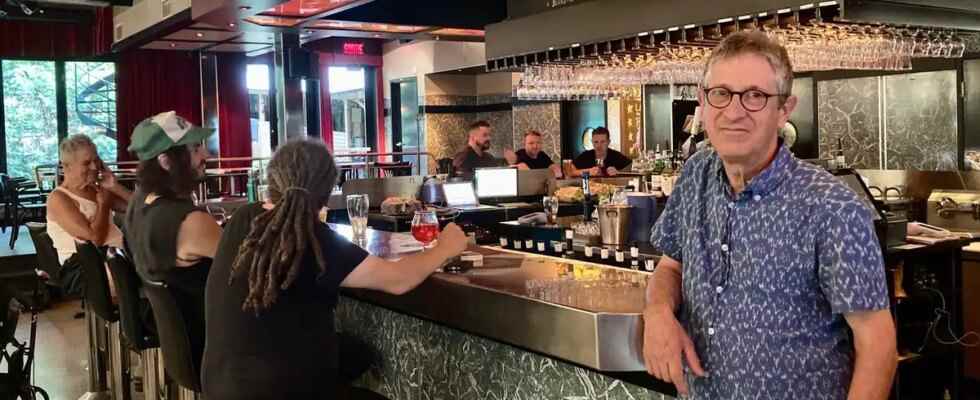Thirty-five years ago, Le Cheval Blanc microbrewery obtained the first craft brewing license in Quebec. Since then, an entire industry has developed around microbrewery beer, and consumer enthusiasm has not waned.
Located on Ontario Street at the corner of Saint-Hubert Street, the Le Cheval Blanc tavern belonged to the Catelli family since 1940, when Jérôme Catelli Denys inherited it in 1981. He began by giving women the right to enter his bar, then quickly wanted to brew its own beer in order to serve it on site.
“At the time, there was only the industrial brewing permit. I started the process to encourage the government to create a craft beer brewing license, as they were doing for wine and cider producers. That’s why I obtained the 001 artisanal permit, as soon as it was created in 1987”, says Jérôme Catelli Denys, today co-owner of the Cheval Blanc with Luc Sénécal.
At the same time, other microbrewery projects were underway, and the almost absolute monopoly of the two large breweries, Molson, founded in 1786, and Labatt, in LaSalle since 1956, was coming to an end.
Two establishments in Estrie, the Microbrasserie Lion d’or and the Massawippi brewery (later bought by Unibroue), were already active in the niche, but with an industrial permit, while the Brasserie Inox obtained the second artisanal permit. In the following years, the McAuslan breweries (St-Ambroise, Griffon), Brasseurs GMT (Belle Gueule) and Les Brasseurs du Nord (Boréale) appeared.
Since then, the number of microbreweries has continued to grow. Their market share is around 15% of beer sales, estimates Marie-Ève Myrand, director of the Association des microbrasseries du Québec (AMBQ). “Today, there are 307 brewing permits in force, including the seven major breweries,” she says.
Jérôme Catelli Denys witnessed this whole revolution. “I finally founded a factory, which I sold to Brasseurs RJ in 1998, and where I worked for 19 years as a brewer. We brewed 100,000 hectoliters a year. Sometimes people think it’s comparable to what big breweries like Molson do, but they brew 4 million hectoliters.”
While Brasseurs RJ continues to brew the white beer called Cheval Blanc today, Mr. Denys has returned to a more artisanal production, with 1,000 hectoliters of beer brewed annually at the bar on Ontario Street and mostly served on site.
For its 35th anniversary, Le Cheval Blanc on Ontario Street will launch several special cuvées in collaboration with other microbreweries such as Lagerbräu and Bières Tamarac, Auberge Sutton Brouërie, as well as La Barberie, which is celebrating its 25th anniversary this year.
Towards local beers
Scattered in all regions, Quebec microbreweries are looking for local ingredients to make their beers, which opens the way to a style of beer typically from here, according to an expert.
“The chance we have in Quebec is the variety, supports the beerologist Serge Noël. We go into all styles of beer, Czech, German, Belgian, and slowly we develop a style inspired by Quebec terroir. This is really the new wave, we want to have beers that speak to us about ourselves.
Several farmers already reserve part of their land for the beer industry.
In 2021, 50 farms were producing malting barley, according to the Producteurs de grains du Québec, while according to statistics from the Quebec Ministry of Agriculture, Fisheries and Food (MAPAQ), 41 producers were growing hops. , the aromatic used to give beer its bitterness.
